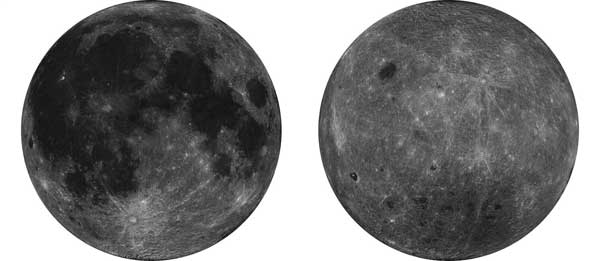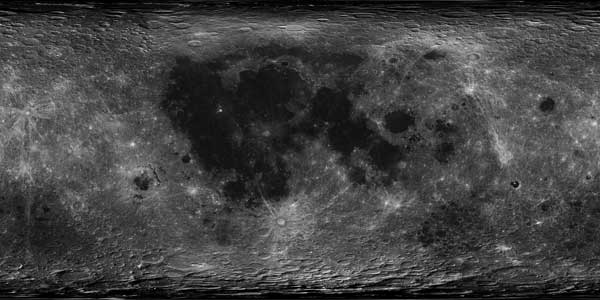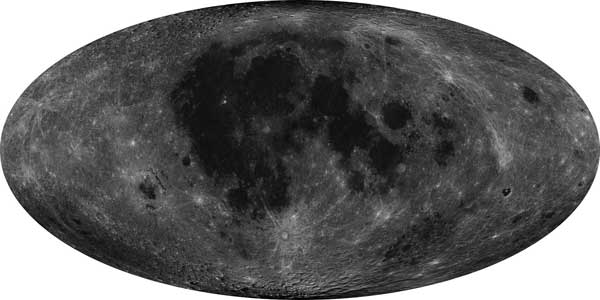


China on Monday published a set of full coverage of moon map and moon images with a resolution of seven meters captured by the country's second moon orbiter, the Chang'e-2. (Xinhua Photo)
China on Monday published a full coverage map of the moon, as well as several high-resolution images of the celestial body, captured by the country's second moon orbiter, the Chang'e-2.
The map and images, released by the State Administration of Science, Technology and Industry for National Defence (SASTIND), are the highest-resolution photos of the entirety of the moon's surface to be published thus far.
The images were photographed by a charge-coupled device (CCD) stereo camera on the Chang'e-2 from heights of 100 km and 15 km over the lunar surface between October 2010 and May 2011, according to a statement from SASTIND.
The resolution of the images obtained from Chang'e-2 is 17 times greater than those taken by the its predecessor, the Chang'e-1.
If there were airports and harbors on the moon, the Chang'e-1 could simply identify them, while the Chang'e-2 would be able to detect planes or ships inside of them.
The scientists also spotted traces of the previous Apollo mission in the images.
Several countries, including the United States, have obtained lunar images with higher resolution, but have not published full-coverage images of the moon with a resolution of seven meters or greater, as China has done.
Scientists have made adjustments to the original data to more accurately reflect the topographic and geomorphologic features of the moon.
Chang'e-2, named after a legendary Chinese moon goddess, was launched on Oct. 1, 2010.
In November 2010, Premier Wen Jiabao unveiled an image taken by the satellite of the moon's Sinus Iridum, or Bay of Rainbows, an area where the future Chang'e-3 moon probe may land.
The launch of the Chang'e-3 is scheduled for 2013, marking the first time for a Chinese spacecraft to land on the surface of an extraterrestrial body.
The photos of the possible landing site, combined with China's complete moon map, will provide basic data for the country's future moon landing missions.
The images will also help scientists to understand the moon's geological structure, as well as give them information about the concentration and distribution of matter on the moon's surface.
The satellite is currently orbiting the moon's second Lagrange Point (L2), located more than 1.5 million km away from Earth.

China on Monday published a set of full coverage of moon map and moon images with a resolution of seven meters captured by the country's second moon orbiter, the Chang'e-2. (Xinhua Photo)

China on Monday published a set of full coverage of moon map and moon images with a resolution of seven meters captured by the country's second moon orbiter, the Chang'e-2. (Xinhua Photo)